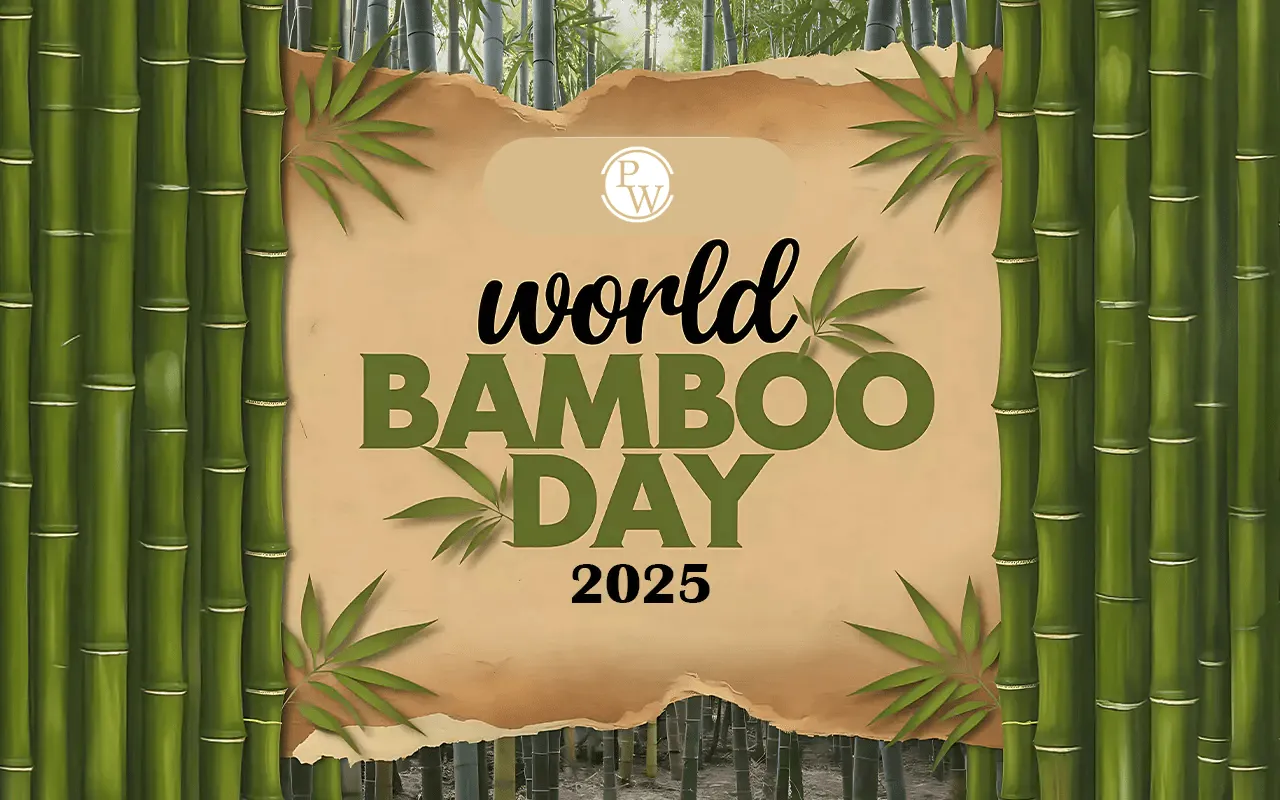
World Bamboo Day 2025 is an annual event celebrated across the world on September 18 to spread awareness about bamboo, its uses, and how it helps in protecting the environment. It also reminds us of the role bamboo can play in sustainable growth.
Bamboo is often called the green gold of nature. It is a tall grass that looks like a tree. People in India and around the world use bamboo for many purposes. From making houses, furniture, paper, and handicrafts to being used as food, bamboo is part of our daily life. World Bamboo Day 2025 connects people, farmers, industries, and governments to promote bamboo as a sustainable alternative to wood and plastic.
World Bamboo Day 2025
World Bamboo Day 2025 will be celebrated on September 18. It was initiated for the first time in 2009 by the World Bamboo Organization during the World Bamboo Congress in Bangkok, Thailand. Since then, countries across the world have observed this day to recognize bamboo as a valuable natural resource.
World Bamboo Day 2025 will focus on the environment, livelihood, and sustainability. People from different sectors, like farmers, industries, and environmentalists, come together to mark this day. The significance of World Bamboo Day is as follows:
-
It raises awareness about the need for greener choices.
-
It promotes bamboo as an eco-friendly substitute for timber and plastic.
-
It encourages more farmers to grow bamboo as a profitable crop.
-
It highlights bamboo’s role in reducing carbon emissions and fighting climate change.
World Bamboo Day Theme 2025
The official theme for World Bamboo Day has not yet been announced by the World Bamboo Organization. However, the theme is expected to focus on inspiring students, innovators, and designers to create and promote modern and sustainable ways to utilize bamboo. The official theme to be announced will also focus on sustainability, climate change solutions, and bamboo-based innovations.
National Bamboo Mission
The Government of India had launched the National Bamboo Mission to promote the cultivation of bamboo and its sustainable usage. The primary aim of the mission is to reduce dependence on timber, increase the income of farmers, and create jobs related to bamboo cultivation in the rural areas of the country. The main goals of the National Bamboo Mission are as follows:
-
Increase the area under bamboo cultivation.
-
Improve the productivity and quality of bamboo.
-
Support bamboo-based industries and small businesses.
-
Provide training to farmers and artisans.
-
Promote bamboo in construction, handicrafts, paper, and furniture industries.
Achievements of National Bamboo Mission
The promotion of National Bamboo Mission supports the agricultural economy in India while also contributing to a cleaner and sustainable environment. The achievements of this mission in the country are as follows:
-
More than 1.5 lakh hectares of land have been brought under bamboo cultivation in recent years.
-
Farmers are being trained in modern bamboo farming methods.
-
Bamboo-based products are being promoted in both Indian and international markets.
-
The mission is to help India become self-reliant in bamboo production.
Bamboo Production in India
Bamboo is termed the “Poor Man’s Timber”. In the present times, bamboo is being increasingly used in modern industries as well. The production of eco-friendly toothbrushes and bamboo-based textiles has increased significantly in the past few years. The Bamboo Production in India and its details are provided in the table below:
| Bamboo Production In India | |
| Aspects | Details |
| Key Facts about Bamboo in India | India has about 136 species of bamboo |
| Bamboo grows in almost every state of India, but is most common in the North-East | |
| India has the largest area under bamboo cultivation in the world | |
| About 13.96 million hectares of land in India are under bamboo forests | |
| The annual bamboo production in India is around 4.6 million tonnes | |
| Uses of Bamboo in India | Building material for houses and bridges |
| Furniture, mats, baskets, and handicrafts | |
| Paper and pulp industry | |
| Food products like bamboo shoots | |
| Biofuel and charcoal | |
Bamboo Production in India State-Wise
Bamboo production in India varies from state to state. Bamboo cultivation is primarily done in the northeastern states of India, and leads the charts in bamboo cultivation. The states in the central and southern parts of the country are also significant contributors. The Bamboo Production in India, state-wise, is summarized as follows:
| Bamboo Production in India State-Wise | |
| States | Details |
| Assam |
|
| Tripura |
|
| Manipur |
|
| Meghalaya |
|
| Mizoram |
|
| Nagaland |
|
| Arunachal Pradesh |
|
| Chhattisgarh |
|
| Madhya Pradesh |
|
| Kerala |
|
Consider exploring PW UPSC courses to learn more about occupational safety and public administration. Equip yourself with the knowledge you need as you prepare for the upcoming UPSC exam!
World Bamboo Day 2025 FAQs
When is World Bamboo Day 2025 celebrated?
What is the theme of World Bamboo Day 2025?
What is the aim of the National Bamboo Mission?
How much land in India is under bamboo cultivation?
Which is the largest bamboo-producing state in India?














